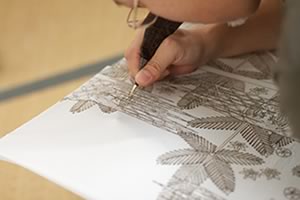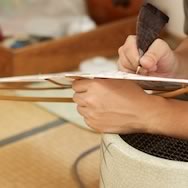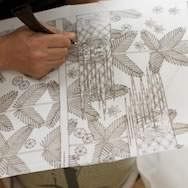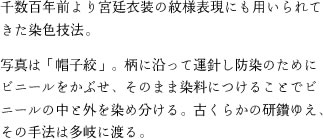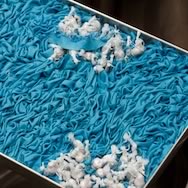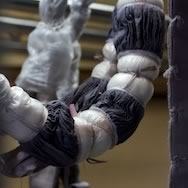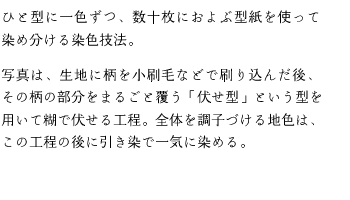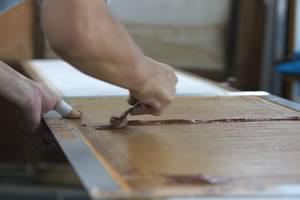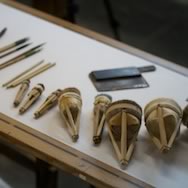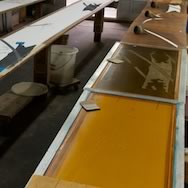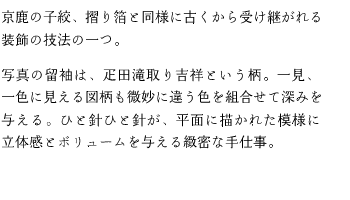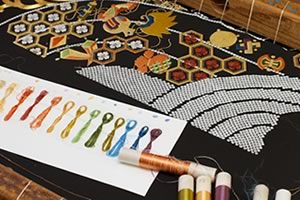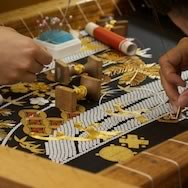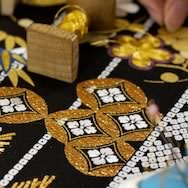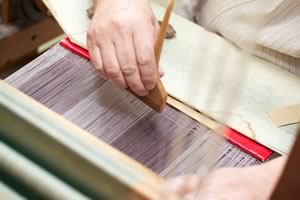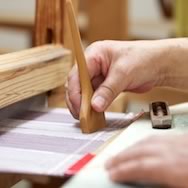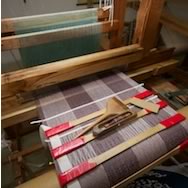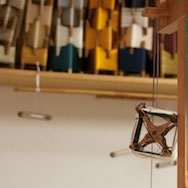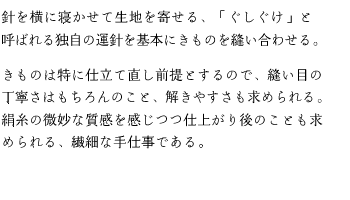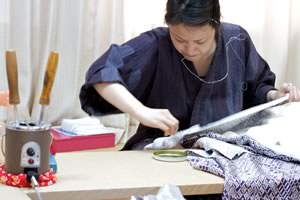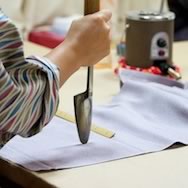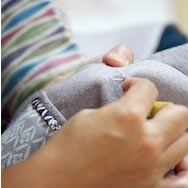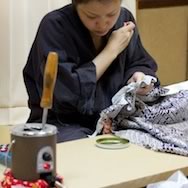![]()
Yuzen-dyeing is a technique that involves a paste-resist method to create unique picturesque designs with various colors. This is the process where design barriers are made with nori rice paste and tsutsugane metal nozzles, in order to prevent the colors in adjoining areas of the design from mixing
in the next process. This process is the essence of kyo-yuzen, and true talent and skill of an artisan is required.
![]()
Kyo-kanoko tie-dyeing is a technique that has been used in court costumes from some 1100 years ago. Boshi tie-dyeing handles the needle along the pattern and covers it with plastic film. After it is dip dyed, we can see the difference in color created by this process. As a technique with a long history of use, Kyo-kanoko tie-dyeing varies in method.
![]()
Surigata Yuzen dyeing is a technique to dye different patterns using dozens of stencils. This is a process where after stenciling a pattern on the fabric using a small paintbrush, it is covered with glue and fuse-gata, a stencil which covers the whole print. The base color will be brush dyed after this process.

![]()
Kyo-nui embroidery is a traditional decorative technique similar to kyo-kanoko tie-dying and surihaku (foiling). The pattern on this tomesode (formal kimono) is Hitta Taki-tori Kissho, representing happiness and luck. Although the pattern may seem to be designed in a single color, there are subtle changes in tone and shade. It is this delicate handwork that adds dimension and volume to a pattern drawn on a flat surface.

![]()
Nishijin brocade is a delicate textile that has developed along with the Imperial court and aristocracy in Nishijin, Kyoto. This light and translucent fabric is fukuro obi (kimono sash), used as a robe of feathers
in Noh plays, also referred to as Minagoromo (a fluid-like fabric). It is woven in kushi-ori (comb weaving),
a technique to bring the weft together in an irregular form with a comb made out of Japanese boxwood.
A very skillful artisan is required to weave this complex textile.
![]()
A kimono is basically sewn by holding the needle horizontally and moving the fabric towards the needle. This unique method is called gushiguke.Since kimono are meant to be re-sewn together after washing, artisans aim for high precision in making kimono but also so that the fabric can be separated easily. While kimono are valued for their delicate use of silk thread, thought must be placed to how they are used after they are completed.
![]()
![]()
At Kimono Artisan Kyoto, our products feature not only traditional skills such as“dyeing”,“sewing”,“weaving”and“tailoring”, but we also provide you with items such as juban / uramono undergarments to complete your kimono experience.



